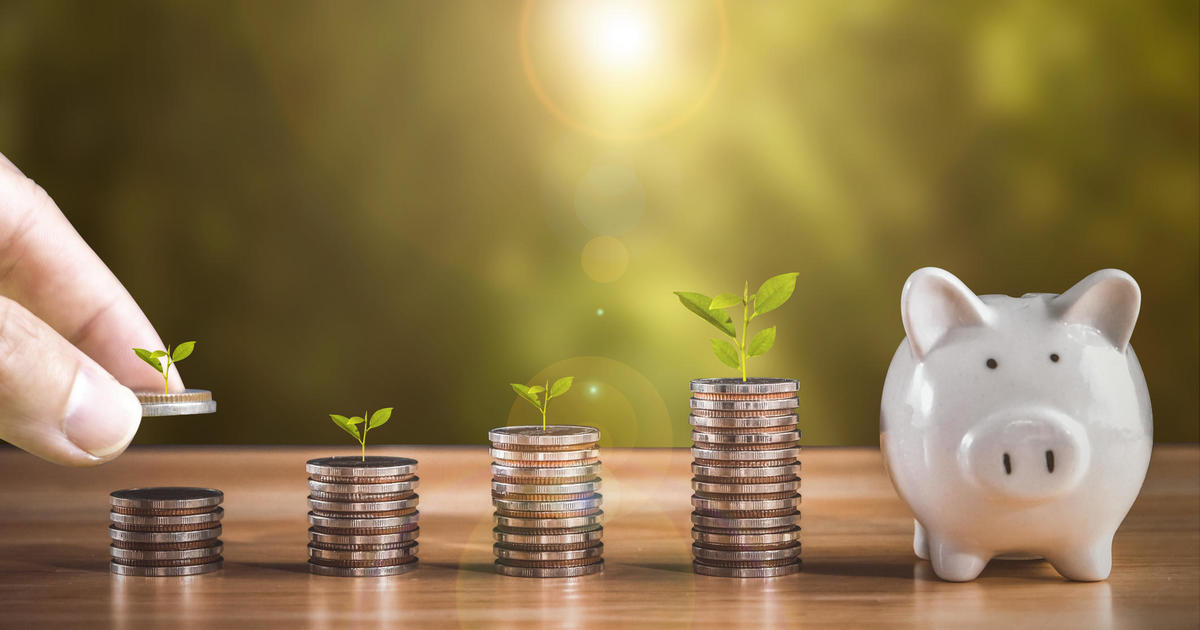Wall Street is in a bear market. Here's what that means for your money.
The stock market's tumble this year has put the S&P 500 into a bear market — the term for when stocks decline at least 20% from their most recent high.
The index lost 4% on Monday to close at 3,750, putting it 21% below its peak in January.
Wall Street is grappling with the impact of rising interest rates, high inflation and energy costs, the war in Ukraine and a slowdown in China's economy, prompting investors to reconsider the prices they're willing to pay for stocks.
Bear markets are fairly common, with the last one occurring just two years ago as the pandemic shuttered the U.S. economy. But this slump could mark the first downturn for younger investors who started trading on their phones during the pandemic, when stocks surged as the economy recovered its footing from the initial COVID-19 shutdown in 2020.
"The financial markets have struggled in their worst start to a year in decades," John Lynch, chief investment officer for Comerica Wealth Management, said in a June 13 research note.
"Surging inflation, the pivot in Fed policy, and historically pricey equity valuations were on the minds of investors as the year began, but the combination of COVID-19 lockdowns in China and Russia's invasion of Ukraine has escalated volatility further with investors becoming increasingly concerned about the possibility of global recession sometime within the next year," he said.
During the past two years, stocks often seemed to go in only one direction: up. Now, the familiar rallying cry to "buy the dip" after every market wobble is giving way to fear that the dip is turning into a crater.
While a fall can be "nerve-wracking ... ultimately this is part of the price we pay for strong returns over time," said Brad McMillan, chief investment officer for Commonwealth Financial Network, in a research note last month.
Here's what to know about a bear market.
Why is it called a bear market?
A bear market is a term used by Wall Street when an index like the S&P 500, the Dow Jones Industrial Average, or even an individual stock, has fallen 20% or more from a recent high for a sustained period of time.
Why use a bear to represent a market slump? Bears hibernate, so bears represent a market that's retreating, said Sam Stovall, chief investment strategist at CFRA. In contrast, Wall Street's nickname for a surging stock market is a bull market, because bulls charge, Stovall said.
The S&P 500 index was down 1.9% in Friday afternoon trading, putting it 20.3% below its high set on January 3. But stocks recovered by the end of trading at 4 p.m., with the S&P 500 closing up 1 point for the day. Overall, the index is down about 19% from its most recent high in January.
For many investors, the bear market will become official if the S&P 500, Wall Street's main barometer of health, finishes the day at least 20% down from its peak.
The Nasdaq is already in a bear market, down 31% from its peak of 16,057.44 on November 19. The Dow Jones Industrial Average is more than 16% below its most recent peak.
The most recent bear market for the S&P 500 ran from February 19, 2020 through March 23, 2020. The index fell 34% in that one-month period, as investors reacted to lockdown orders that closed businesses and kept consumers at home. It's the shortest bear market ever.
What are investors worried about?
Market enemy No. 1 is interest rates, which are rising quickly as a result of the high inflation battering the economy. Low rates act like steroids for stocks and other investments, and Wall Street is now going through withdrawal.
The Federal Reserve has made an aggressive pivot away from propping up financial markets and the economy with record-low rates and is focused on fighting inflation, which hit a new 40-year record in May.
Last month, the Fed signaled additional rate increases of double the usual amount are likely in upcoming months, part of its plan to make borrowing more expensive and put the brakes on spending by consumers and businesses.
But the risk is the Fed could cause a recession if it raises rates too high or too quickly.
Russia's war in Ukraine has also put upward pressure on inflation by pushing up commodities prices. And worries about China's economy, the world's second largest, have added to the gloom.
So we just need to avoid a recession?
Economists say the odds of a recession are increasing due to high inflation, which could crimp consumer spending, and the Fed's rate hikes. Currently, the chances of a recession are about 30%, according to research from Moody's Analytics and a Wall Street Journal survey of economists.
But even if a recession is avoided, the Fed's interest rate hikes will still put downward pressure on stocks.
If customers are paying more to borrow money, they can't buy as much stuff, so less revenue flows to a company's bottom line. Stocks tend to track profits over time. Higher rates also make investors less willing to pay elevated prices for stocks, which are riskier than bonds, when bonds are suddenly paying more in interest thanks to the Fed.
Critics said the overall stock market came into the year looking pricey based on history. Big technology stocks and other winners of the pandemic were seen as the most expensive, and those stocks have been the most punished as inflation rates have risen. But the pain is spreading widely, with shares of Target and other retailers slumping hard this week after reporting weaker-than-expected profits.
Stocks have historically declined almost 35% on average when a bear market coincides with a recession, compared with a nearly 24% average drop when the economy avoids a recession, according to Ryan Detrick, chief market strategist at LPL Financial.
"Going back more than 50 years shows that only once was there a bear market without a recession that lost more than 20% and that was during the Crash of 1987," Detrick said in a research note.
During other near-bear markets that occurred without a recession, stocks bottomed out at a roughly 19% decline, he added.
Should I sell everything to avoid more losses?
Only if you need the money now or want to lock in the losses, according to experts. Otherwise, many advisers suggest riding through the ups and downs while remembering the swings are the price of admission for the stronger returns that stocks have provided over the long term.
While dumping stocks would stop the bleeding, it would also prevent any potential gains. Many of the best days for Wall Street have occurred either during a bear market or just after the end of one.
"Declines set the stage for future growth, which often happens faster than anyone expects," McMillan noted.
For instance, in the middle of the 2007-2009 bear market, there were two separate days where the S&P 500 surged roughly 11%, as well as leaps of better than 9% during and shortly after the roughly monthlong 2020 bear market.
Advisers suggest putting money into stocks only if it won't be needed for several years. The S&P 500 has come back from every one of its prior bear markets to eventually rise to another all-time high.
The down decade for the stock market following the 2000 bursting of the dot-com bubble was a notoriously brutal stretch, but stocks have often been able to regain their highs within a few years.
How long do bear markets last?
On average, bear markets have taken 13 months to go from peak to trough and 27 months to get back to breakeven since World War II. The S&P 500 index has fallen an average of 33% during bear markets in that time. The biggest decline since 1945 occurred in the 2007-2009 bear market when the S&P 500 fell 57%.
History shows that the faster an index enters into a bear market, the shallower they tend to be. Historically, stocks have taken 251 days (8.3 months) to fall into a bear market. When the S&P 500 has fallen 20% at a faster clip, the index has averaged a loss of 28%.
The longest bear market lasted 61 months and ended in March 1942 and cut the index by 60%.
How do we know a bear market is over?
Generally, investors look for a 20% gain from a low point as well as sustained gains over at least a six-month period. It took less than three weeks for stocks to rise 20% from their low in March 2020.



